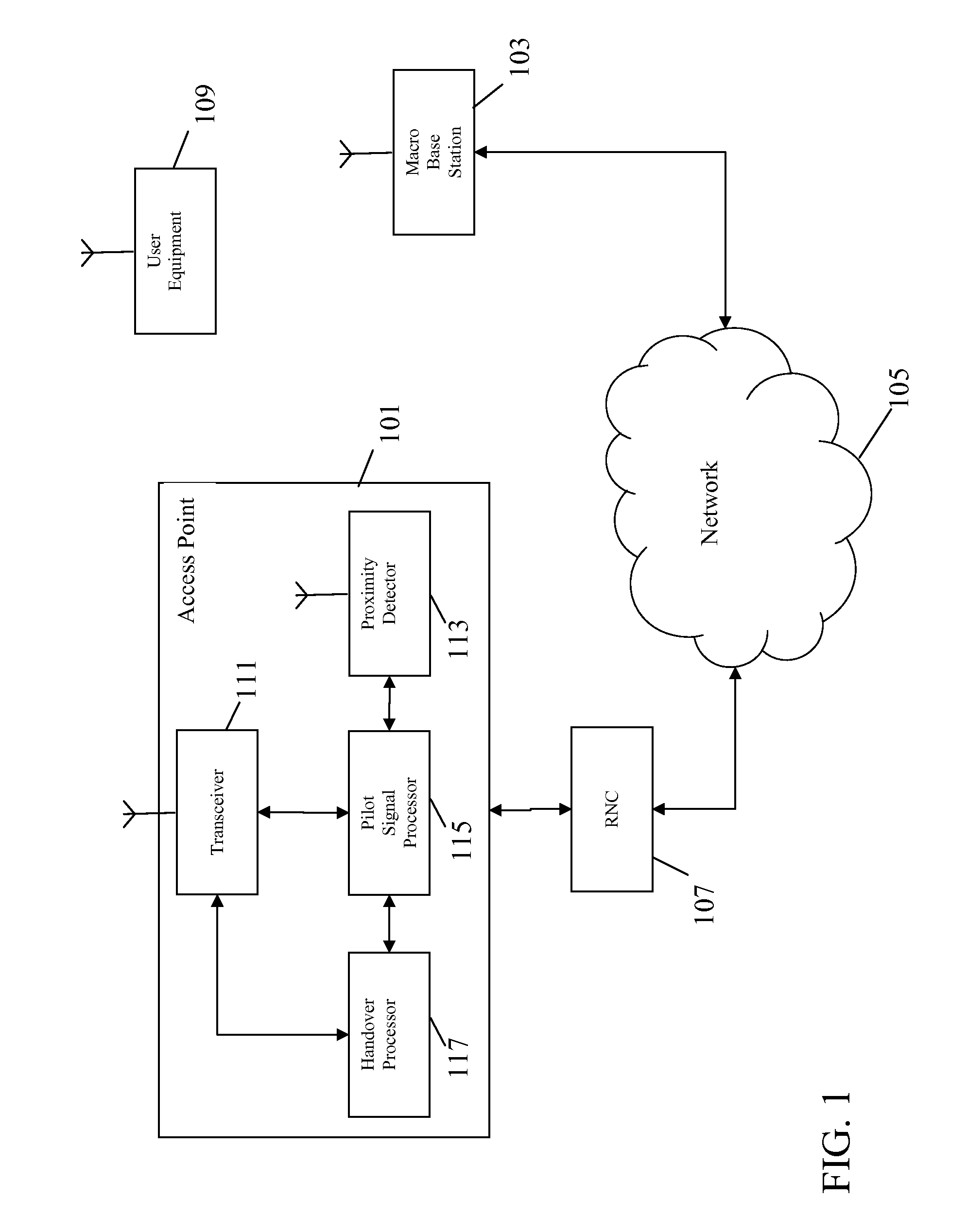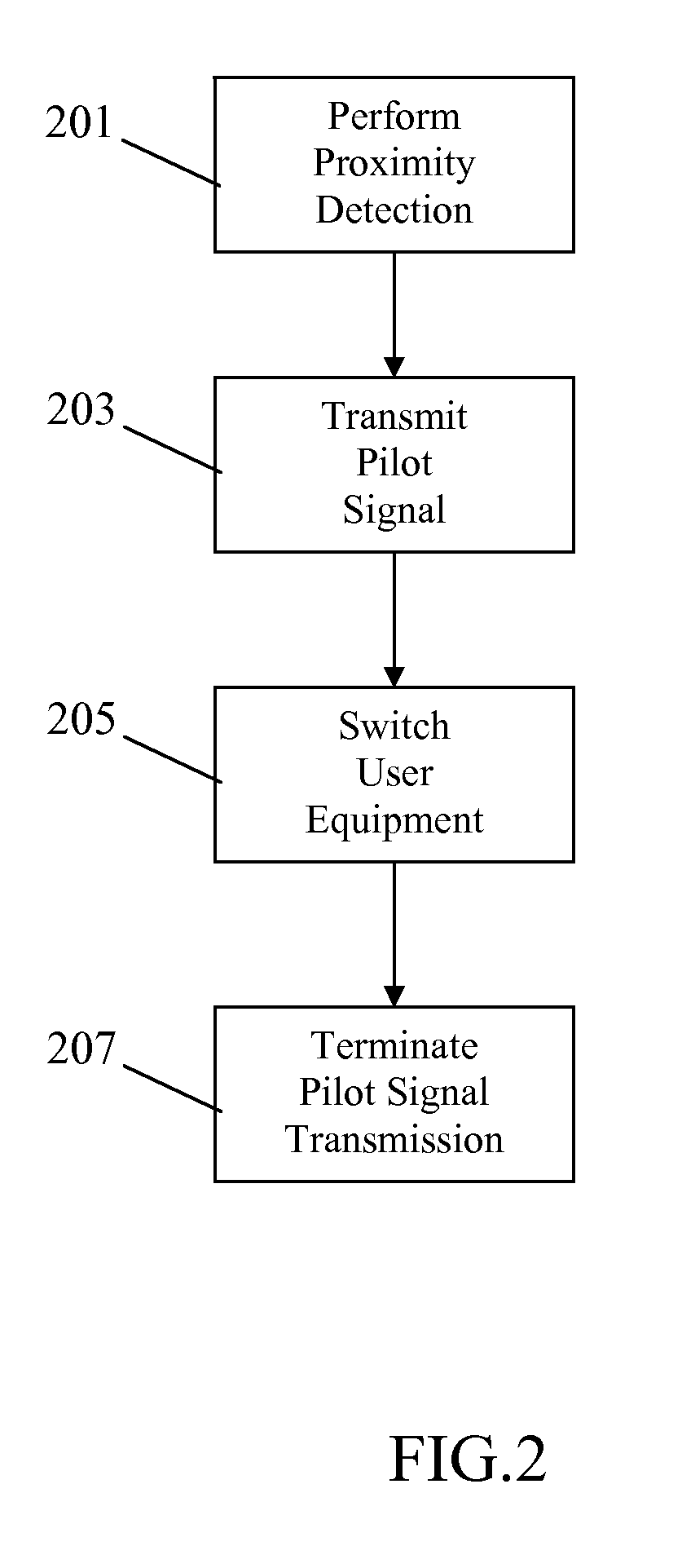Cellular communication system and method of operation therefor
a cellular communication system and communication system technology, applied in the field can solve the problems of increasing the criticality of efficient handover/cell selection techniques, affecting and the inability to support soft handover of residential access points underlay layers, etc., to achieve the effect of improving the performance of cellular communication systems and reducing interference to the higher layer from the underlay layer
- Summary
- Abstract
- Description
- Claims
- Application Information
AI Technical Summary
Benefits of technology
Problems solved by technology
Method used
Image
Examples
Embodiment Construction
[0020]The following description focuses on embodiments of the invention applicable to a CDMA cellular communication system and in particular to a 3rd Generation Cellular communication system such as a UMTS System. However, it will be appreciated that the invention is not limited to this application but may be applied to many other communication systems.
[0021]FIG. 1 illustrates an example of a cellular communication system in accordance with some embodiments of the invention. In the system, a macro-layer is formed by macro-cells supported by base stations. Furthermore, an underlay layer of pico-cells are supported by a large number of access points corresponding to pico-cell base stations. For brevity and clarity, FIG. 1 illustrates only a single access point 101 and a single macro-cell base station 103. Specifically, each access point may have an intended coverage of a single house or dwelling, and for a typical macro-cell coverage area of 1 to 30 km2 there may be hundreds or even t...
PUM
 Login to View More
Login to View More Abstract
Description
Claims
Application Information
 Login to View More
Login to View More - R&D
- Intellectual Property
- Life Sciences
- Materials
- Tech Scout
- Unparalleled Data Quality
- Higher Quality Content
- 60% Fewer Hallucinations
Browse by: Latest US Patents, China's latest patents, Technical Efficacy Thesaurus, Application Domain, Technology Topic, Popular Technical Reports.
© 2025 PatSnap. All rights reserved.Legal|Privacy policy|Modern Slavery Act Transparency Statement|Sitemap|About US| Contact US: help@patsnap.com



